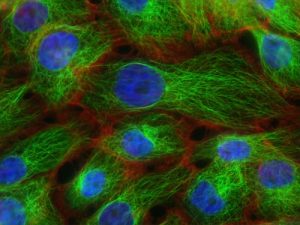Acute myeloid leukaemia (AML) is a blood/bone marrow cancer, which affects over 250,000 people per year worldwide.
High mortality rates associated with leukaemia can be, in part, due to unreliable diagnosis and current treatments, which include aggressive chemotherapy and stem cell transplantation, and often do not result in effective disease remission.
Dr V. Sumbayev, Prof Y. A. Ushkaryov and Dr B. F. Gibbs at the Medway School of Pharmacy have discovered that leukaemia cells posses a novel biochemical pathway, which helps them to avoid the human body’s own anti-cancer defences. This pathological immunoprotective pathway does not exist in healthy blood cells, but develops as a result of malignant transformation. Their work led to a fundamental breakthrough in the understanding of the pathophysiology of leukaemia. As a result of the insights biotechnology and pharmaceutical industries are changing their focus.

A robust diagnostic test system which can be used under conditions of a GP surgery is being developed. Since leukaemia affects a large number of children and elderly people, this discovery, which will help with timely diagnosis and non-invasive treatment of acute myeloid leukaemia, crucially important for public health.

